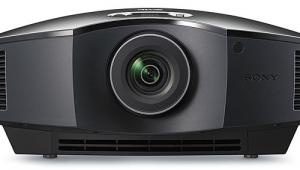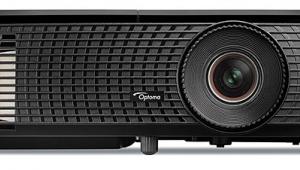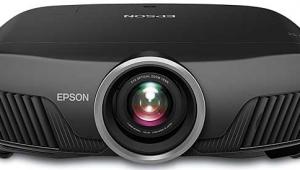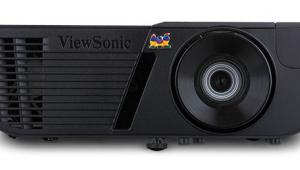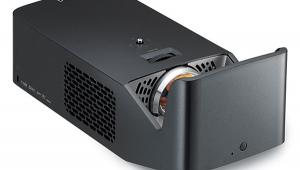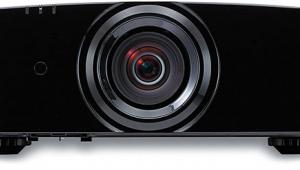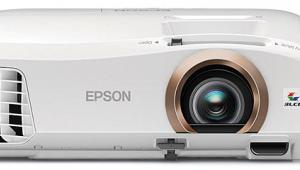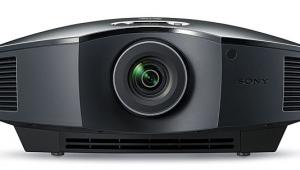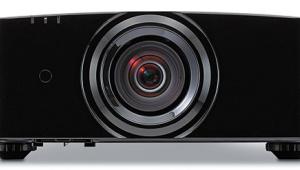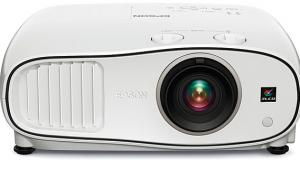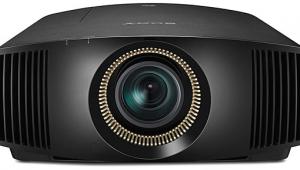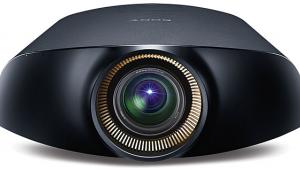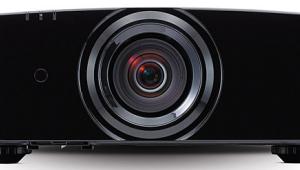Sony VPL-VW1000ES 4K SXRD Projector How Close Should I Sit?
According to the promotional material Sony provided with the projector, the company recommends a viewing distance of between 1.5 and 3.5 picture heights for 4K material (3.0 to 3.5 is frequently recommended for 1080p HDTV). But what about 2K sources upconverted to 4K? Since the latter is likely to be the best material available to the consumer for use on a 4K projector for the foreseeable future, this isn’t a trivial question.
Using picture height as a yardstick is actually a confusing way to determine seating distance. It doesn’t take into consideration screens—and images—of varying aspect ratios. A more accurate way to look at the issue is the viewing angle—the angle the image subtends in your field of vision from left to right. The viewing angle is more usefully related to picture width than picture height.
Here’s a helpful Website on viewing distance: myhometheater.homestead.com/viewingdistancecalculator.html.
If you know the size of your screen and the seating distance, the calculator on this site will give you the viewing angle. For the 118-inch-wide 16:9 screen I used in this review, a viewing distance of 1.5 x PH (picture height) is 99.45 inches or about 8.3 feet. That’s 0.84 x PW (picture width), or a viewing angle of 61.3 degrees. This seating distance may be technically useful for native 4K material—or to prove that when you’re that close, you can see the pixel structure with ordinary HDTV but not with 4K—but it’s likely to be a bit over the top for most viewers.
What viewing angle should you aim for? SMPTE (the Society of Motion Picture and Television Engineers) recommends 30 degrees—which happens to be virtually the same as the maximum distance you should sit if you want to see all of the detail in a 1080p image. On the other hand, THX recommends 40 degrees. (That’s what the THX site will give you. THX recommendation on the viewing-distance calculator site is slightly less. The 40-degree recommendation may reflect THX’s more recent thinking.)
A 30-degree viewing angle is about 3.33 x PH. 40 degrees is 2.27 x PH (in both cases for a 16:9 screen). While both of these figures are further away than 1.5 x PH, both of them are within Sony’s 1.5x to 3.5x recommended range for 4K. For the 118-inch-wide screen I used here, I found a viewing distance of 13 to 14 feet most comfortable for both conventional HDTV sources upconverted to 4K and for the limited selection of native 4K material available to us. 13.5 feet results in a 40-degree viewing angle for this screen.
For standard-definition sources, I preferred to move back to about 16 feet. If you can’t move the seating distance, another approach to minimizing the visibility of artifacts from SD material would be to use the VPL-VW1000ES’ lens memory to reduce the picture size for SD sources, perhaps together with a four-sided masking screen (though these tend to be very expensive). Alternately, you could use a second, smaller screen.
For a constant-height setup, such as with an anamorphic lens, the viewing angle will be smaller for anything apart from a 2.35:1 image filling the entire screen. That’s probably acceptable for most 16:9 (or even 4:3) movies, which tend to be comedies and similar material in which the immersion of a wider viewing angle is less important. If you sit 11.4 feet from a 100-inch-wide 2.35:1 screen, for a viewing angle of 40 degrees, the image width at the same distance is reduced to 76 inches and the viewing angle to 30 degrees when you project a 16:9 constant-height image on the same screen. Not optimum, perhaps (particularly with the occasional 16:9 epic such as Jurassic Park or Avatar) but workable.
To determine the viewing distance for either the THX or SMPTE viewing angle, a simple calculation will make the exercise less tedious. I’ve done most of the math so you don’t have to. For the THX 40-degree result, divide the screen width in inches by 8.76 for the seating distance in feet. For the SMPTE 30-degree solution, divide the screen width in inches by 6.42 for the seating distance in feet.
